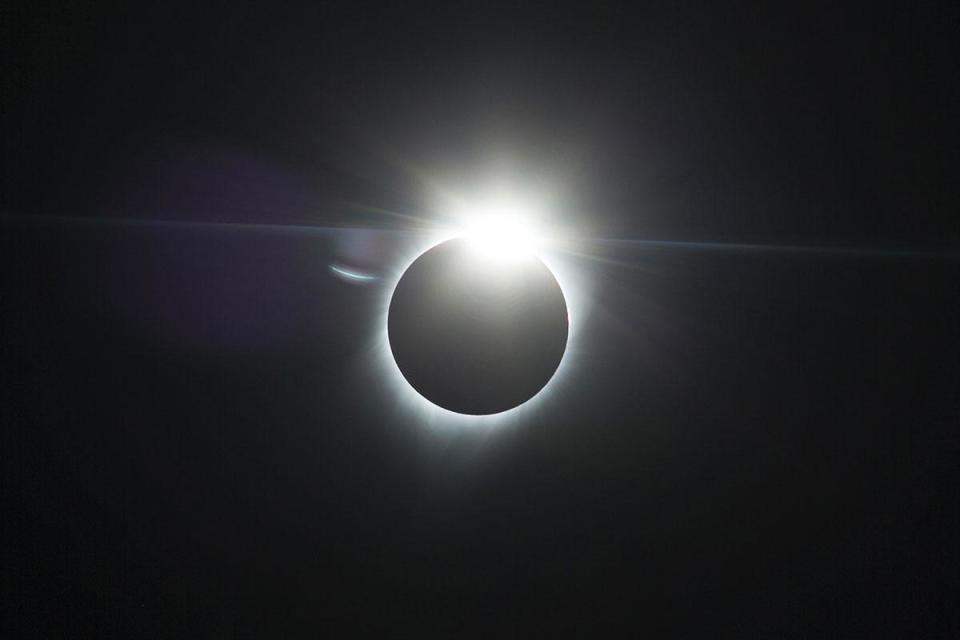When and where to see the next solar eclipse

The 21 August 2017 total solar eclipse will go down in astronomical history as the most viewed, with seven million-plus people estimated to have watched the event as it swept across the US from Oregon to South Carolina.
But thanks to the cosmological clockwork of the solar system, the exact track and timing of future eclipses can be predicted with remarkable accuracy.
The cosmic coincidence of the moon blotting out the earth happens most years. The key variables when deciding whether to travel to a total solar eclipse are the difficulties and cost of getting to the right part of the world; the chances of a good experience during the event; and the opportunities for rewarding travel in the region before or after the eclipse itself.
For the next five total solar eclipses, The Independent has assigned a reward/cost score from one to five stars.
South America
2 July 2019
Reward/cost: *
It will be midwinter in the Southern Hemisphere when the line of totality begins in the South Pacific and races east to the coast of Chile. While it will be experienced in the Pitcairn Islands, most of its track passes over the ocean; it will be late in the day when it makes landfall in Chile.
Weather records indicate that the only reliable place to view the eclipse without cloud cover will be inland from La Serena in Chile. Finding accommodation and reaching a suitable viewing site is likely to be expensive and difficult. Furthermore, it will be cold, and July is the most sub-optimal month to be in South America.
South America
14 December 2020
Reward/cost: ****
The track of this event is very similar to the previous year’s total solar eclipse, only shifted hundreds of miles south, but it is likely to prove a much happier experience. It will be midsummer in Chile and Argentina, and Patagonia will be at its best. The eclipse could be part of a great South American adventure, taking in Santiago and Buenos Aires – and even Antarctica, given the proximity to the main departure point for expedition vessels, Ushuaia. But air fares are likely to be high if you return over Christmas or New Year; delay your homebound trip to later in January to keep the flight costs low.
Antarctica
4 December 2021
Reward/cost: **
Expedition vessels are likely to incorporate this hard-to-reach event into their summer schedules, but Dr John Mason – who has been leading eclipse tours for decades – plans to be in the hard-to-reach South Shetland Islands.
“I don’t like observing eclipses from ships,” he told The Independent. “I’ve always seen them from land, and I like to find out-of-the-way places.”
Such a trip can include much wider travels in South America, where it is early summer.
North America
8 April 2024
Reward/cost: ****
For the second time in seven years, the US will be visited by a total eclipse that covers a large swathe of the nation. This one will also include Mexico – where the weather is likely to be finest – and Canada, where there is a much higher likelihood of cloud cover. Key cities in the line of totality include Dallas and Montreal, with Niagara Falls also within the stripe of darkness.
With Easter early (31 March) in 2024, the eclipse will provide a great opportunity for families with school aged children to see an eclipse.
Europe
12 August 2026
Reward/cost: *****
Another prime summer eclipse, which begins in the Arctic and crosses Greenland and Iceland before arriving in the northern half of Spain. The line of totality crosses the great cities of Bilbao, Valencia and Palma de Mallorca, all of which are very easy to reach from the UK – and, between them, will have several million holidaymakers.
The weather prospects for the Mediterranean locations are better than for Atlantic Spain, but the area around Zaragoza is likely to be best of all.
Dr Mason, though, is contemplating a trip to Greenland.

